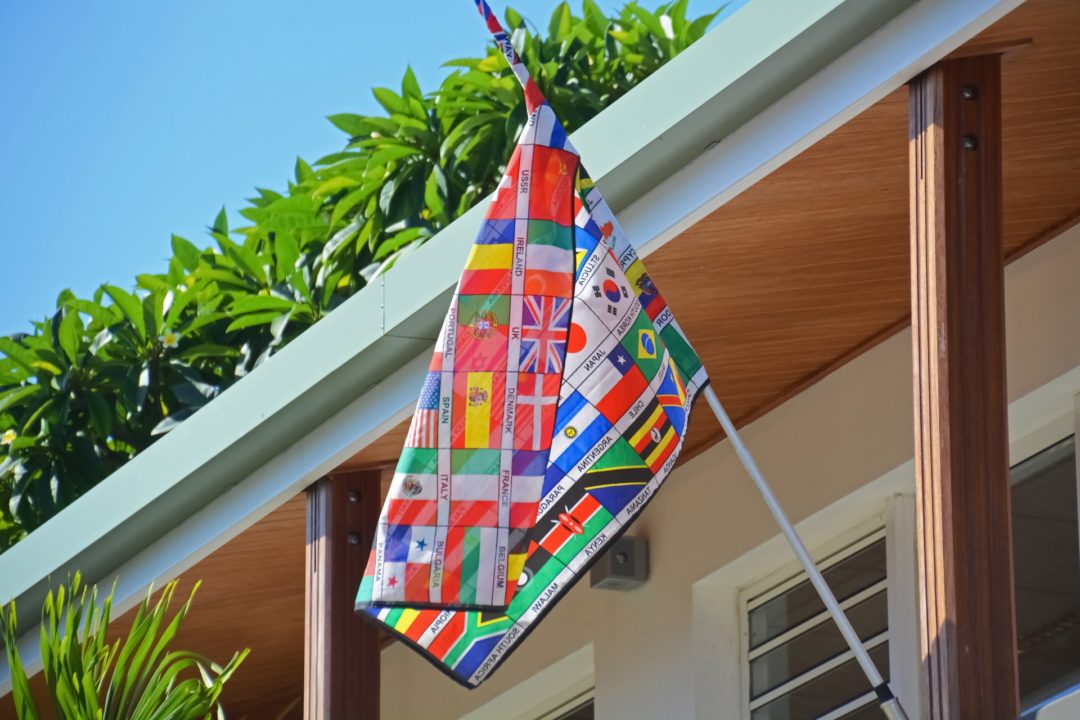Exploring the landscape of popular hobbies in Russia unveils a tapestry rich in culture and history.
Hobbies like crafting Matryoshka dolls and engaging in traditional handicrafts offer a deep dive into Russian artistry.
If you’re looking to immerse yourself in Russian culture, learning about these activities can be the perfect starting point.

Venturing into the world of Russian handicrafts, you’ll find exquisite miniatures featuring colorful floral patterns, revived post-1917 revolution.
These crafts are not only a testament to craftsmanship but also a window into the nation’s past.
Learning these skills connects you to generations of Russian artisans.
Aside from handicrafts, sports and outdoor activities hold a significant place in Russian life.
Whether it’s ice skating on a frozen lake or hiking through the country’s vast landscapes, there is no shortage of ways to stay active.
These activities not only keep you fit but also allow you to experience the natural beauty of Russia in a unique way.
Historical Evolution of Hobbies in Russia

Russian hobbies have undergone significant transformations over the centuries, shaped by historical events, cultural shifts, and religious influences.
Let’s explore the evolution of these pastimes from traditional roots to modern intellectual and recreational activities.
Tales of Tradition and Hobby Transitions
In ancient Russia, traditional activities such as weaving, embroidery, and wood carving were prevalent.
These crafts were not only practical but also served as forms of artistic expression.
The creation of items like Matryoshka (nesting) dolls started in the late 19th century, influenced by Japanese nesting dolls called Fukuruma.
As time passed, societal changes, including the reigns of figures like Ivan the Terrible and Nicholas I, impacted hobbies.
During the Soviet era, many old traditions were suppressed, but some persisted clandestinely, preserving cultural heritage.
Literature and Intellectual Pursuits
In the 18th and 19th centuries, literature became a prominent hobby among the Russian elite, bolstered by writers like Alexander Pushkin and Leo Tolstoy.
Reading and discussing literature flourished as salons and intellectual gatherings became popular.
During the Soviet period, literature remained a favorite pastime despite heavy censorship, as people turned to books for both escape and subtle rebellion.
Contemporary surveys reveal that reading is among the most popular hobbies in Russia even today, highlighting a lasting legacy of literary appreciation.
The Role of the Russian Orthodox Church
Religion has historically influenced Russian hobbies and pastimes.
Orthodox Christianity, the dominant faith in Russia, played a role in molding cultural activities. Religious celebrations and rituals often involved communal activities like baking and crafting, fostering a strong sense of community.
Under the Soviet regime, religious practices were banned, yet they continued in secrecy, subtly influencing hobbies and cultural practices.
Today, religious festivals and associated activities continue to be an integral part of Russian life, reflecting the enduring influence of the Orthodox Church.
Cultural Significance of Hobbies

Hobbies in Russia often reflect the rich tapestry of its culture, intertwining history, art, and culinary traditions. These activities provide insight into Russian life, highlighting the importance of craftsmanship, community events, and gastronomic delights.
Artistic Expressions and Russian Artists
Artistic hobbies such as painting, doll-making, and lacework offer a glimpse into the soul of Russian culture.
Traditional crafts like Zhostovo paintings and Matryoshka dolls symbolize both artisanal skill and cultural heritage.
These items, often hand-painted with intricate designs, serve as popular souvenirs and reflect the creative spirit of Russian artisans.
Matryoshka dolls, for instance, not only feature artistic brilliance but also carry historical significance.
The dolls, crafted by Sergei Malyutin and painted by Vasily Zvyozdochkin, were inspired by Japanese designs and have become iconic symbols of Russia. Engaging in these arts connects you with Russia’s historic and cultural past.
Festivals, Concerts, and Public Events
Public events like festivals and concerts play a significant role in Russian life, fostering community and cultural appreciation.
Events such as Maslenitsa, the Russian pancake week, encapsulate elements of Russian culture, blending food, music, and folk traditions in vibrant, communal celebrations.
Concerts of classical and folk music, often held in grand venues like the Bolshoi Theatre, are essential cultural experiences.
These performances showcase Russia’s rich musical heritage, featuring works by Pyotr Ilyich Tchaikovsky and Sergei Rachmaninoff.
Attending such events offers a deep dive into Russia’s artistic landscape, while also providing an opportunity to appreciate the country’s historical achievements in music.
Culinary Delights and Russian Cuisine
Cooking, an integral part of Russian daily life, brings people together through shared experiences and traditional recipes.
Dishes like Borscht, Pelmeni, and Blini are not just meals but expressions of cultural identity.
These recipes often reflect the diverse influences and landscapes that have shaped Russia’s culinary scene.
Engaging in Russian cooking can be a rewarding hobby. Not only do you get to enjoy sumptuous meals, but you also connect with centuries-old traditions.
Culinary festivals and workshops further emphasize the role of food in Russian culture, making cooking a meaningful way to explore the nation’s heritage.
Check out our Huge List of Food Hobbies for more awesome food and cooking-related hobby ideas!
Popular Hobbies and Activities Today

Many Russians engage in a diverse range of hobbies. Activities include sports, creative arts, and educational pursuits, reflecting the rich cultural fabric of the country.
Sports and Outdoor Adventures
Russians are passionate about sports.
Soccer, ice hockey, and basketball are widely played and followed.
Outdoor activities such as hiking and skiing are also popular, especially given the vast and varied landscapes in Russia.
Many people participate in fitness and wellness activities, including yoga and running.
These activities are often organized through community centers and outdoor parks, making them accessible to people of all ages and fitness levels.
Check out our full post of Outdoor Hobbies for more great hobby ideas to spend time in the great outdoors.
Creative and Artistic Hobbies
Creative hobbies are highly valued in Russia.
Among the youth, painting is a common pastime, as seen from its popularity with Generation Z. Drawing, sculpting, and needlework are also favorites.
Cooking and baking are not just daily tasks but creative ventures enjoyed by many.
These hobbies often serve as an expression of cultural identity. Gardening is another widespread activity, combining creativity and the appreciation of nature.
Check out our Huge List of Craft Hobbies, for great creative, artistic and DIY art hobby ideas…
Educational and Skill-Building Activities
Many Russians pursue educational hobbies to enhance their skills.
Chess remains a popular intellectual pursuit, with a rich history in the country.
Universities and community centers offer various courses to help people develop new skills.
Learning new languages and technical skills, such as programming, are also common.
Many people take advantage of online platforms to gain certifications that can boost their careers.
Engaging in these educational activities contributes to personal growth and professional development.
Hobbies and the Russian Landscape

Russia’s diverse terrain offers a variety of hobbies that connect people with nature and stunning scenery. Whether you’re drawn to adventurous activities or artistic pursuits, the Russian landscape is both a playground and muse.
Exploring the Great Outdoors
Russia’s vast territory provides numerous opportunities for outdoor activities.
Hiking and walking are popular, with trails in areas like the Caucasus Mountains and Lake Baikal providing breathtaking views.
For those interested in hunting, the forests of Siberia and the Far East are known for their diverse wildlife.
Engaging in these activities not only brings you closer to nature but also offers a chance to learn about Russia’s rich biodiversity.
Photography and Painting Russian Scenery
The stunning landscapes of Russia serve as an inspiration for many photographers and painters.
The golden domes of churches in cities like Moscow and St. Petersburg provide iconic subjects. Rural areas and natural wonders such as the Ural Mountains and the Volga River offer equally captivating scenes.
Whether you prefer capturing these vistas through a lens or on canvas, Russia’s scenery is a source of endless inspiration. Engaging in these hobbies allows you to explore the country’s visual beauty deeply.
Social and Demographic Influences on Hobbies

Hobbies in Russia are often shaped by social and demographic factors such as family traditions, gender roles, and age. Each of these aspects contributes uniquely to the kinds of leisure activities people engage in.
Family Activities and Generational Hobbies
Family plays a significant role in the choice of hobbies.
Traditional pastimes often get passed down from one generation to the next. In many Russian households, you may find activities like sewing, knitting, and woodworking, which have been long-standing family hobbies.
Younger generations, influenced by technology and globalization, tend to engage in more modern hobbies.
They often prefer video gaming, social media activities, and electronic music production.
These activities sometimes create a generational divide, but they also offer new ways for family members to connect.
Parents serve as role models for their children, introducing them to hobbies that they themselves enjoyed growing up. This shared experience can strengthen family bonds.
Additionally, family-oriented activities such as hiking, camping, and museum visits are common, fostering closer relationships among all family members.
Women’s Participation in Hobbies
Women’s participation in hobbies reflects both traditional roles and modern shifts.
Historically, women have been more involved in activities like knitting, cooking, and gardening. These hobbies often align with traditional domestic responsibilities but also provide a creative outlet.
Today, professional and social advancements have expanded the range of hobbies women participate in.
Many women now engage in sports, travel, and digital arts.
The rise of fitness culture and yoga classes has also impacted hobby choices, encouraging a more active lifestyle among women of various age groups.
Marriage and family responsibilities still influence hobby choices. Married women or those with children may choose activities that can be easily integrated with family life.
However, online communities and hobby groups for women provide avenues for pursuing interests independently.
Gender roles and expectations continue to evolve, shaping the landscape of hobbies women engage in today. Whether through traditional crafts or modern sports, the participation of women in hobbies is a testament to changing societal norms.
Institutional and Educational Impact

Educational institutions in Russia significantly influence the popularity and accessibility of hobbies.
Universities offer various clubs, while the education system integrates activities that foster students’ interests in multiple areas.
University Clubs and Extracurricular Activities
Universities in Russia often provide a broad range of clubs and extracurricular activities to cultivate students’ hobbies.
Participation in these clubs helps you develop practical skills and build a network.
For example, science clubs offer opportunities for research and innovation.
Military service clubs, particularly in institutions with a military curriculum, prepare you with skills like discipline and leadership.
Sports clubs, from basketball to judo, promote physical fitness and teamwork.
These activities are not just recreational; they also complement your academic learning, providing a well-rounded university experience.
Engaging in university clubs can enhance your resume and make you more competitive in the job market.
Hobbies in the Russian Education System
The Russian education system integrates hobbies within its curriculum to encourage a balanced development of students.
Schools often include subjects like arts and crafts, which help you explore your creative side.
In high schools, electives such as gardening and cooking allow you to pursue personal interests.
Science and technology clubs can spark your fascination with STEM fields, offering hands-on experience in laboratories.
Military-educational institutions incorporate specific hobbies related to military service, providing training in areas like strategy and outdoor survival.
These extracurricular activities aim to develop well-rounded individuals equipped with both academic and practical skills.
Cultural Artifacts and Hobbies

Russian cultural artifacts and hobbies are deeply rooted in the nation’s rich history and diverse traditions. You’ll find intricate handicrafts and awe-inspiring landmarks that tell stories of creativity, craftsmanship, and cultural significance.
Handicrafts and the Art of Intricate Designs
Russian handicrafts are a testament to the country’s dedication to artistry and detail.
One popular example is the Matryoshka doll. These nesting dolls were first crafted in the late 19th century by Sergei Malyutin and painted by Vasily Zvyozdochkin. Inspired by Japanese Fukuruma dolls, Matryoshkas consist of multiple layers of decreasing size, each fitting inside the other.
Another cherished craft is the Gzhel pottery. Made from white clay, it features distinctive blue and white patterns that adorn tableware and decorative items.
The intricate Zhostovo paintings are another striking example, known for their vibrant floral designs on metal trays, often used as house decor.
For textile enthusiasts, Vologda lace is a must-see. This fine lace-making tradition uses intricate patterns to create delicate and beautiful designs.
Finally, Khokhloma painting, traditionally seen on wooden tableware, showcases striking red, gold, and black designs inspired by nature.
Cultural Landmarks and Their Inspirations
Russia’s cultural landmarks are iconic symbols of its rich heritage.
The Kremlin, located in the heart of Moscow, is perhaps the most famous. This fortified complex includes palaces, cathedrals, and governmental buildings, showcasing an array of architectural styles and historical influences.
Saint Basil’s Cathedral, with its colorful onion domes, is another must-visit site. It was commissioned by Ivan the Terrible and is famous for its unique, swirling patterns and vibrant colors, exemplifying Russian architectural creativity and craftsmanship.
Peterhof Palace, often called the Russian Versailles, was built by Peter the Great to rival the grandeur of French palaces. Its gardens, fountains, and opulent interiors are a testament to the lavish tastes and artistic aspirations of Russian royalty.
The Winter Palace in St. Petersburg, part of the Hermitage Museum, is another cultural landmark. It houses a vast collection of art and historical artifacts, and its elaborate Baroque architecture reflects the high craftsmanship and artistic dedication of its creators.
Frequently Asked Questions

Understanding the popular hobbies in Russia involves delving into traditional activities, historical influences, and the impact of climate. You’ll also encounter various social practices integral to Russian life.
What traditional activities do Russians partake in during their leisure time?
Russians enjoy traditional handicrafts such as Matryoshka doll making and Gzhel ceramics.
Folk dancing and singing are also popular. Religious holidays and seasonal festivals often feature traditional games and performances, reflecting Russia’s rich cultural heritage.
How does Russia’s historical background influence its contemporary pastimes?
Russia’s past, marked by periods like the Soviet era, has shaped many pastimes.
For example, chess gained massive popularity due to state promotion. Activities like literature and classical music also draw from the nation’s storied history, often celebrated in public and private gatherings.
What leisure pursuits are typical among Russian youths and adults today?
Modern Russians of all ages enjoy hobbies like reading and cooking.
Sporting activities, including soccer and ice hockey, are widespread. Younger Russians often engage in technology-based activities like gaming and social media.
Which cultural practices are integral to Russian social life?
Social practices such as large family gatherings and communal dining are significant.
Tea drinking remains a daily ritual, often accompanied by sweet treats. Public baths, known as “banya,” are not just for health but serve as social hubs.
What impact does the Russian climate have on the popularity of indoor and outdoor hobbies?
Russia’s cold climate makes indoor activities like reading and cooking highly popular.
In winter, outdoor pursuits like cross-country skiing and ice fishing become prevalent. The short summer season sees increased engagement in hiking, picnics, and outdoor sports.
How does Russian dietary culture reflect in their common recreational activities?
Russian dietary habits are rich in hearty and traditional foods. These can be seen in activities like communal cooking and baking.
Seasonal food preservation, such as pickling and jam-making, is also a popular pastime. It reflects the cultural importance placed on home-cooked meals and shared dining experiences.





